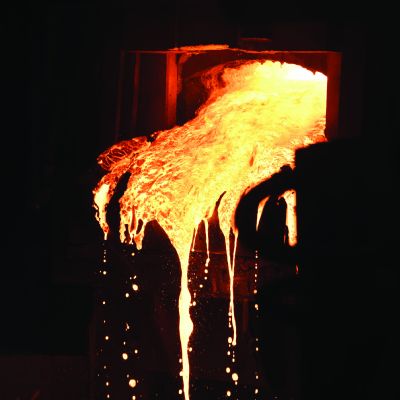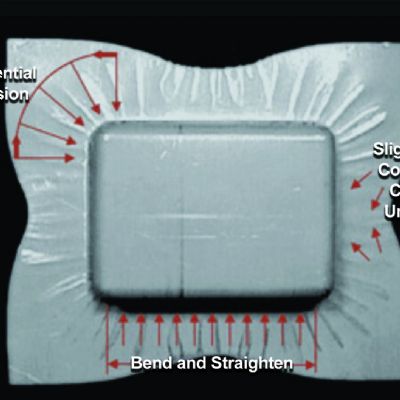General Techniques to Minimize Springback
June 1, 2008Comments
Last month this column included a brief discussion of springback caused by a change in the elastic and residual (trapped) stresses within a stamping. Too often, these stress changes create serious problems in maintaining stamping shape and dimensional consistency during initial forming. Even worse, the additional deformation generated by line dies and the heat applied during assembly processes further rebalance these stresses to the required lowest energy level. This stress rebalancing causes even more dimensional changes. Case studies have shown that even in-service performance, such as vibration, corrosion and severe loading, can cause further dimensional changes.
Traditional springback-compensation techniques usually fall into one of three categories.
1) Apply an additional process that changes undesirable stresses into less damaging stresses. One example is a post-stretch operation that reduces angular change and sidewall curl by transforming the normal tensile-to-compressive elastic or residual stress gradient through the thickness of the sheetmetal into a tensile-only stress. Moveable lock beads in the binder activated by stop blocks apply about a 2 percent in-plane tensile strain at the end of the stroke. A small reduction in sidewall length replaces the angular change and sidewall curl. Another example is over-forming panels and channels. Removing the stamping from the die eliminates the damaging elastic stresses as the part springs back to part print.
2) Modify the forming process or tooling to reduce the level of stresses imparted to the part during the initial forming operation. An extreme example is replacing sheetmetal flowing through a draw bead and over a die radius with a simple 90-deg. bending operation in a press brake. If the elastic and residual stresses are absent, there’s no need to worry about springback compensation.
3) Modify product design to resist the release of the elastic stresses. Examples include beads, darts, offsets, or other mechanical and geometrical stiffeners.








